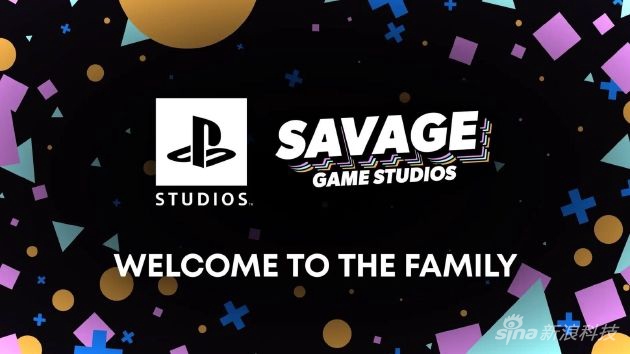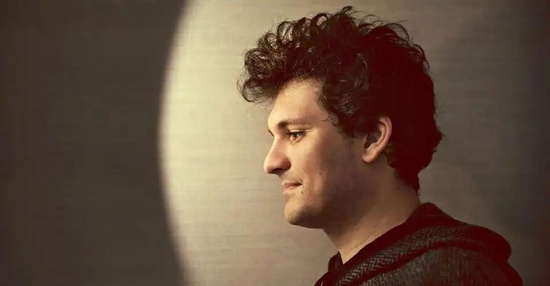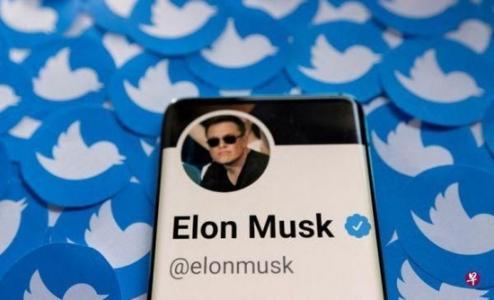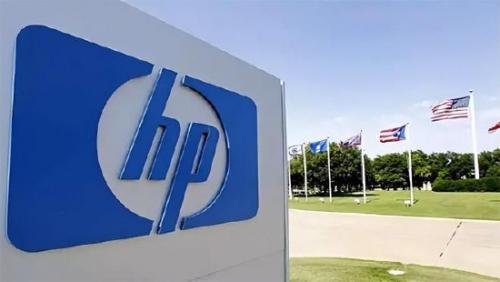your current location is:Home > Finance > NewsletterHomeNewsletter
Netflix executives interpret the 2022 Q3 financial report: the impact of price reduction on user churn rate is positive

the US video streaming service provider Netflix today announced the company's financial report for the third quarter of fiscal year 2022. According to the financial report, the company’s third-quarter revenue was $7.926 billion, an increase of 5.9% compared with $7.483 billion in the same period last year; net profit was $1.398 billion, a decrease of 3.5% compared with $1.449 billion in the same period last year; Earnings were $3.10, compared with $3.19 a year earlier.
Following the earnings release, Netflix co-CEO Read Hastings, co-CEO and chief content officer Ted Sarandos, COO and chief product officer Greg Peters ( Company executives including Greg Peters, CFO Spencer Neumann, and VP of Investor Relations Spencer Wang attended the subsequent earnings call to decipher key points and answer JPMorgan Chase & Co. Analyst Doug Anmuth asked.
The following is the transcript of the conference call:
Doug Anmuth: The company announced the details of the launch of the "basic service with advertising" in 12 countries, including the United States, last week. How does the management set the price for this service? What are the features of this product?
Greg Peters: In terms of pricing, we mainly consider the value that the product can provide to users, and convert consumers' payment into wonderful programs. In the third quarter, the company launched a very large number of wonderful episodes. The plans also look pretty good. In terms of advertising content, we expect that the regions enjoying the service can contribute more to the growth of paid subscribers for the company, as well as progress in commercial operations, and the unit economics will be generally balanced or positive. Our pricing is not high, so it is expected to bring a large number of paying users to the company and drive long-term revenue and profit growth for the company.
Doug Anmuth: With regard to the unit economics you mentioned being broadly balanced or positive, is that also the company's basic paid subscription service?
Greg Peters: One thing that needs to be reminded is that there is no phenomenon that a large number of users have stopped the previous paid plans and switched to subscribe to this new service. For example, users who have chosen 4K playback services before continue to maintain the previous payment solution. The overall stickiness of the company's users is still very good. What I'm talking about is roughly balanced or positive unit economics compared to the company's basic paid subscription service with no ads.
Doug Anmuth: Where does the company's confidence in the growth of the advertising business come from? How does management view current advertiser demand for the service? Because last week the company mentioned that hundreds of customers have decided to advertise on the service, and that the ad inventory has been sold out.
Greg Peters: According to local conditions, we have launched some advertising models in these markets, and we have also attracted many customers. Our small but sophisticated sales team has cooperated with the Microsoft team and approached brand owners and related companies. Advertising agencies, we have seen a very large demand at present. They agree with the company's concept of this service. They also believe that the content strength of Netflix can support the promotion of the brand among consumers around the world, and the demand is very strong. Our confidence comes from our deep recognition of the business model and sales process, and the model and process are also in the process of continuous iteration. In the next few quarters, more powerful functions will be launched to optimize the attractiveness of advertising services, so that customers are willing to choose More service options, for example, we have released functions such as "certified partners", and there will be more excellent functions in the future.
Doug Anmuth: The precise delivery function you mentioned is also very important, such as the delivery for certain regional markets, theme types, best-reputed episodes, user age, gender, etc. I know that the current customer feedback on the precise delivery function is still unclear. Relatively few, how will this function be improved in the future?
Greg Peters: We still really want to bring this service to market as soon as possible. It only took six months from the announcement of the plan to the launch, which can be said to be very fast. There is also the full cooperation of Microsoft, and the company itself also has certain precision delivery capabilities, including in the context of episodes, the type of theme, etc., which is also in line with the current transformation of the TV market, that is, from traditional TV to digital TV. The transformation Related, our audiences are all obtained by subscription, which can fully help the accurate placement of advertisements in terms of commercialization. Of course, we also attach great importance to privacy. We use customer information to provide more relevant information on the Netflix platform. advertising content, and nothing else.
Doug Anmuth : There has been a lot of talk about advertising price (CPM) in media reports, saying that Netflix's price is two to three times the cost of Internet TV (CTV) advertising, is that accurate? What is the rationale for the company's current advertising pricing levels?
Greg Peters: We don't comment on a specific pricing, but the company's own product is very attractive, of course, also thanks to our large paying user base, and these advantages are other advantages including traditional TV. What the channel doesn't have is the great entertainment we can provide, and advertisers value the company's strengths in these areas, which drives demand and shapes the company's pricing strategy.
Doug Anmuth: You have also mentioned the innovation of advertising content model before. In the future, there will be more different types of advertising products, such as advertisements in four to five minutes per hour. There may not be such a large amount at present. For example, there will be a cap on how often an ad will appear. Did the company have any other innovations in the initial stages of the service's rollout? How will the future progress?
Greg Peters: In the initial stage, we hope that this service is acceptable to the audience, and the experience in terms of the amount and frequency of advertising delivery should still be user-centric. What makes me very happy is that in the process of communicating with brands and advertisers, they also agree with us very much, and they do not want to be placed too frequently, but also want to be more original and unique. Volume caps can also make their ads more differentiated. In the future, we will continue to use the capabilities and experience accumulated by the company in the past ten years to enhance innovation capabilities and expand innovative practices. Personalized advertising will be a very good attempt, based on different viewing content, for different users and audiences. Different types of advertising, this is a dimension to consider. In addition, we will also work with brand owners and advertisers to find the most suitable advertising formats and advertising experiences for paying Internet TV viewers, which are areas that require continuous development.
Spencer Newman: Another part of the innovation is the speed of product launches, as Greg said, coordinating the operation of the various regional markets, it took only six months from the announcement of the plan to the launch, the 12 countries. Contributing to more than half of the company's revenue, I hope to emphasize this flexibility here, and I hope this flexibility will continue in the future.
Doug Anmuth: Investors are also discussing the impact of this new service on the company's existing services and the number of paying subscribers. What does the company think?
Greg Peters: I would like to reiterate here that the new service did not result in a large number of changes to user-paid plans. In addition, as I mentioned before, our purpose (to provide new services) is not to transfer users from one paid plan to another in the future. We hope that by providing more diverse services and functions, customers can find and choose. A paid plan that suits you, and we also got the expected results in terms of advertising business and monetization, and based on this, we developed a pricing strategy. We expect this model that is acceptable to the audience and relatively low pricing to bring the company more advertisers, more paying users, better unit economics and revenue streams, so even if a user changes plans, We would love to see you too.
Doug Anmuth: What is the impact on reducing churn and market penetration in different regions?
Greg Peters: Overall, the impact of price cuts on churn should be positive, but the service is still in the early stages of launch, and there are a lot of things and factors to watch in the coming months.
Ted Sarandos: It's also about user engagement, and the best way to reduce churn is to keep them entertained with content.
Doug Anmuth: Yes, the company did a good job in terms of engagement last quarter, Ted, and we'll talk about that in a moment. Separately, at the company's Code conference last month, Google CEO Sundar Pichai said the Netflix-Microsoft ad partnership was one of the biggest deals ever. What cooperation with Microsoft gives the company the confidence to increase ad revenue and paid subscriptions?
Greg Peters: One of the reasons for choosing to work with Microsoft is our high level of strategic alignment, our approach is similar: release product, learn fast, iterate fast, be flexible in terms of format and approach to innovation , including innovation in improving products, meeting market expectations, and maintaining huge flexibility. Microsoft has strong strength in these areas, and we still have a lot of room for improvement and will continue to improve. Both teams are working hard to meet the needs we see so far, and we also provide Microsoft with the opportunity to improve its capabilities. In the future, we will hire more talents, improve team services, and jointly provide high-quality services to customers.
Reed Hastings: Bob Iger (former CEO of Disney) also talked about the linear TV market going down a cliff.
Doug Anmuth: He did say that.
Reed Hastings: I still underestimate the impact of the shrinking market on advertisers, who are reaching a smaller audience, and the decline in 18- to 49-year-olds is greater than the decline in pay TV. Quick, it's a vicious cycle that accelerates the collapse of linear TV in every way outside of a handful of ad categories, including sports.
Doug Anmuth: Yes, this also raises a question, and I also want to ask Greg, in the process of talking to advertising agencies and marketing service providers, does the company feel that Netflix's advertising growth is more from the transfer of linear TV, or is it? New digital advertising market?
Greg Peters: As far as the company's advertising business and products are concerned, in most cases it is still competing with linear TV, and we will continue to improve the attractiveness of digital advertising. What you see now is that in direct response advertising, the company can meet the demand, and in brand advertising, as we develop, we will also gain greater competitiveness and lead the market in the future. In addition, I also think that the boundaries of market segments will not be so obvious in the future. Our job is to improve our competitiveness in terms of technical elements, improve the ability of accurate delivery, and display products for advertisers when the audience is watching exciting content.
Doug Anmuth: Spencer, the profit generated by advertising revenue should be very considerable. Considering that Microsoft has been responsible for most of the hours, what key costs and investment does the company need to bear in terms of advertising business operations?
Spencer Newman : Yeah, I agree with you, it takes time for the ad business to grow, and Greg mentioned that in terms of unit economics, we've had a neutral to positive Taking the growth factor into account, the advertising business has a very large role in promoting the company's overall revenue and profit growth. Of course, there will also be operating costs, including some from the partnership with Microsoft, and the cost of expanding the team. Under the leadership of Jeremi (Jeremi Gorman, President of Global Advertising) and Peter (Peter Naylor, VP of Ad Sales at Netflix), the increase The cost of advertising business capabilities, there will be various costs in all aspects. I won't go into specifics, but in the long run, these costs are insignificant and can be seen in the company's outlook for the fourth quarter. Because this new service was launched in the middle of the quarter, we do not expect it to have a significant impact on the company's overall performance in the fourth quarter, but the boost to performance in the future must be natural.
Doug Anmuth: Very good, then I also want to state here that our earnings meeting has been going on for 15 minutes, but the number of paying users has not been mentioned yet (laughs). The company's number of paying users increased by 2.4 million in the third quarter and is expected to increase by 4.5 million in the fourth quarter. How does the company view the growth in the number of core paying users? How will this situation change next year after the further development of advertising and paid sharing business?
Reed Hastings: Thank you very much, our contraction period is finally over and we are starting to return to positive growth, our outlook for the fourth quarter is justified, we need to accelerate the momentum of growth, the company is focused on improving, Whether it's content, marketing, low-priced ad-supported paid plans, paid-to-share, and more, all will support the company's growth next year. Of course, there is also the issue of exchange rates. The impact in this regard is still very large, and this impact will not disappear, but other aspects are positive. Does Spencer have anything to add?
Spencer Newman: Thank you Reed for helping me introduce a lot. As we've said before, the company isn't growing as fast as it used to, and there's still a lot of work to do to maintain the momentum. We are very satisfied with the growth in the third quarter, the user growth has accelerated compared with the previous quarters, almost every country market is the same, the churn rate is similar to the situation at the end of the second quarter, and the level is slightly higher. Overall, the number of paying users was a net increase of 2.4 million, slightly higher than previously expected. We also expect a net increase of 4.5 million paid users in the fourth quarter, which we mentioned earlier. The fourth quarter started very well. I know that Ted will also mention the content situation later, including "Monster: Jay" "Monster: The Jeffrey Dahmer Story," "The Watcher," and so on, this season is very strong. But some of the factors we mentioned earlier that could accelerate top-line growth, whether it's advertising or anything else, won't have a significant financial impact in the first quarter. In our letter to shareholders, we also mentioned that new solutions for paid sharing and commercialization will be released in 2023, and these will only start to have an impact next year. In the near future, the factors hindering the company's revenue growth, in addition to exchange rates, are the penetration rate of the Internet TV market and the sales cycle. It also faces market competition, as well as the impact of the macro environment, such as rising inflation, rising energy prices, and deteriorating geopolitical conditions. We also take these factors into account in our fourth-quarter outlook, and the market visibility is not as high as before. Overall, our growth momentum is good, with net additions of paying subscribers in both the third and fourth quarters, and revenue growth will accelerate next year.
Doug Anmuth: The company has launched the two largest English-language dramas in three or four months: "Stranger Things 4" and "Monster: The Story of Jeffrey Dahmer". Are they close to resuming their pre-pandemic online rhythm? What role will it play in driving user growth in the third quarter and whether it will recover in the fourth quarter?
Ted Sarandos: Big productions and high engagement drive business growth, and users are realizing the value of these plays, looking forward to our content, and looking forward to a steady stream of great titles. You did a great job, Stranger Things 4 was very well received, followed by The Gray Man, Purple Hearts, The Sea Beast, Monsters: The Jeffrey Dahmer Story and Peepers. Our production rhythm is indeed getting better and better, and we are becoming more and more mature in the creation of original content, and it has only been 10 years since we started to enter this industry.
Reed Hastings: Maybe Ted can also talk about the progress of content each month so far and how things will improve next year once the outbreak eases further.
Ted Sarandos: Exactly. Due to the epidemic, a lot of content has been delayed until later this year. Although everyone has begun to resume normal work, the projects they are dealing with are still projects done during the epidemic, so it will take several years to completely eliminate the content that appeared due to the epidemic. Posting delayed. From the past situation, the content online in the fourth quarter is also more than that in the first and second quarters. In most cases, it is because the autumn TV drama and film cycle is not over, and the role of film festivals and awards ceremonies is added. It takes a while to digest all of this content. We will also proactively address postponing situations to ensure content is available and to meet the viewing needs of viewers.
Spencer Newman: To add. Our work on streamlining content distribution is done across all content categories, so no matter what mood the audience is in, what tastes they have, there will always be something for everyone, not just in English. In the third quarter, various regional markets had very good content online, such as Brazil's "Sintonia", Germany's "The Empress", Poland's "High Water", South Korea "Narco-Saints" and other content, both locally and elsewhere, have had a huge impact. The rhythm of the content we are talking about, in fact, the situation of each market also needs to be taken into account.
Ted Sarandos: Maybe Extraordinary Attorney Woo is a very good example, with 400 million hours of online viewing worldwide, a Korean drama can have an extraordinary impact on a global scale .
Doug Anmuth: Ted, there has been a lot of discussion about the concept of content production. Has there been any change in the company's process or selection criteria for content selection? Does it need to be improved?
Ted Sarandos: Going back to what I said earlier, the company started to enter this field about ten years ago. At that time, there was no copyright content of its own, and there was no content library. Later, we established our own IP content library as soon as possible. During that decade, viewership grew, revenue grew, and we made more profit than all our competitors combined, companies that have been in the business for over 100 years. When looking at the company's development history, we see many mistakes that we have made, and we also learn from them. Today, we have the ability to make the company invincible, we have established many partnerships, and have summarized a set of effective workflows to ensure the quality of online content. We work with content creators to provide them with Provide various tools for realizing content production. These are things that the company owns patent rights, and also benefit from the company's development scale. Based on this, you can create the content you want to make to satisfy the user's viewing experience. It needs to be reminded that the language of our content products is not only English, nor is it only a theme type and format, only through diversified attempts, we can achieve large-scale, enhance creativity, and achieve heart-to-heart with the audience. And out of reach of competitors, the process continues to mature the company. At the beginning of the company's establishment, there was no professional help or experience in the production of original dramas. It has also started from scratch along the way. In the third quarter alone, seven of the content works we launched are the most popular in the company's history. s work.
Doug Anmuth: Last quarter, the company expected to spend $17 billion on content this year, the same as last year. If you exclude the cost of last year’s increase due to the epidemic, the number of 17 billion actually increased. Has the budgetary restraint prompted companies to take a different approach in the operation of content production? Where does the company's confidence in increasing both the quantity and quality of content in each country's market come from?
Ted Sarandos: We have seen continuous improvement in the type of content, the number of releases, the scope, and the release rhythm of blockbusters. I feel better and better about the 17 billion investment, because compared to competitors As far as Netflix is concerned, the impact of each investment of Netflix is getting bigger and bigger. This is a point we are very concerned about. Our investment level is appropriate. As the revenue growth rate recovers, we will re-examine this figure. , but in terms of investment, we will still maintain a moderate attitude.
Doug Anmuth: The audience's expectations for "Knives Out 2: The Cocoon" are very high. I know that during Thanksgiving, the company will select some theaters for a week's screening, and then it will be launched on Netflix on December 23. In addition, It seems that some people also want the theater release time to be extended. Can you talk about this issue? Why only one week of screenings in theaters? Could a hit like this drive up viewership of the film on Netflix?
Ted Sarandos: Our business focus is still on the Netflix platform for users to enjoy the entertainment experience that Netflix produces movies, and all our efforts and capital investment are also devoted to this. The original movies launched by Netflix are created by the best quality filmmakers in the world. They are the highlight of film festivals around the world, and the audiences are in great demand for these movies. For those who are unable to visit major film festivals in person, the 600-screen screening a week can provide them with the opportunity to get in touch with the film and enhance the influence of the film like a film festival. I think this is another way to raise expectations and improve the reputation of the film before it hits Netflix. Of course, doing anything is always subject to various discussions and criticisms, and there is no doubt that the movies we make are always for users, and most users will still watch the movie through Netflix.
related articles
Article Comments (0)
- This article has not received comments yet, hurry up and grab the first frame~












